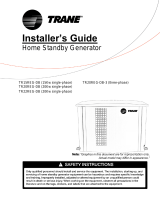Page is loading ...

Technical Support and E-Warranty Certificate www.vevor.com/support
SEAMLESS ALUMINIUM ALLOY GAS
CYLINDER CUSTOMER USAGE
INSTRUCTION
MODEL: 133-12.4-5LB
We continue to be committed to provide you tools with competitive price.
"Save Half", "Half Price" or any other similar expressions used by us only represents an
estimate of savings you might benefit from buying certain tools with us compared to the major
top brands and doses not necessarily mean to cover all categories of tools offered by us. You
are kindly reminded to verify carefully when you are placing an order with us if you are
actually saving half in comparison with the top major brands.

- 1 -
MODEL: IMN1000-UL
133-12.4-5LB
Have product questions? Need technical support? Please feel free to
contact us:
CustomerService@vevor.com
NEED HELP? CONTACT US!
This is the original instruction, please read all manual instructions
carefully before operating. VEVOR reserves a clear interpretation of our
user manual. The appearance of the product shall be subject to the
product you received. Please forgive us that we won't inform you again if
there are any technology or software updates on our product.
Seamless Aluminium
Alloy Gas Cylinder
Customer Usage

- 2 -
1.Introduction
1.1 Standard:DOT-3AL
1.2 Specification
Diameter(mm)
Capacity
(L)
Length
(mm)
Weight
(kg)
Working
Pressure(Psi)
φ133
3.4
465
3.6
1800
1.3 Filling Medium: CO2
1.4 Filling weight: 50-5%LBS
1.5 Working Temperature: -30~+60℃
1.6 Product structure diagram
1.Valve 2.Seal ring 3.Bottle

- 3 -
2. Operation steps
In order to ensure that the gas cylinder is not under overpressure due to the rise of
ambient temperature during filling and use, the filling quantity of the gas cylinder
must be strictly controlled. When determining the filling capacity of compressed
gas and high-pressure liquefied gas cylinders, it is required that the pressure of the
gas in the cylinder at the maximum service temperature shall not exceed the
maximum allowable pressure of the cylinder. The specific requirements are as
follows:
a.Conduct safety inspection on gas cylinders and surrounding environment;
b.Slowly unscrew the cylinder valve;
c.Adjust the pressure reducing valve to adjust the pressure to the required value;
d.Close the cylinder valve after use;
e.Close the pressure reducing valve after the residual gas in the pressure reducer
is exhausted;
f.Check whether the cylinder valve is fully closed (see whether the pressure gauge
on the pressure reducer is zero).
When opening the cylinder valve, never stand in front of the pressure reducer, that
is, the pressure gauge; When opening the cylinder valve, the adjusting screw must
be fully loosened.
3.Daily inspection
a.When there is no gas in the pressure reducer, confirm that the pointer of the
pressure gauge returns to zero.
b.Leak detection (under normal circumstances, the frequency of leak detection
shall not be less than 1 time/week)
1. Open the cylinder valve and pressure reducing valve normally;
2. Apply the leak detection liquid to the position where air leakage may occur. If air
bubbles appear and gradually increase, it indicates that there is air leakage here.
Generally, the place where air leakage occurs is the interface between the pipeline
and the nut and the screw;

- 4 -
3. If the pressure reducer is checked for air leakage, close the cylinder valve first,
turn out the pressure regulating screw in a counterclockwise direction. If the
reading of the high pressure gauge decreases, it means that the high pressure
part of the pressure reducer or the valve seat of the cylinder is leaking; If the
reading of the low pressure gauge decreases, it may be that the low pressure part
of the pressure reducer or the pipeline equipment leaks; If the reading of the high
pressure gauge decreases and the reading of the low pressure gauge increases, it
is air leakage at the adjusting screw.
4.matters needing attention
a.Gas cylinders should be stored in a cool, dry place away from heat sources.
b.When serious gas leakage is found, the cylinder valve shall be closed in time.
c.Handle gas cylinders with care.
d.Pressure reducer shall be installed during use. Various pressure reducers
cannot be mixed.
e.When opening the cylinder valve, the pressure regulating screw should be fully
loosened to prevent the diaphragm from being damaged by the instantaneous
pressure, thus leading to the failure of the pressure reducer.
f.Do not let oil or flammable organic matter contaminate the cylinder (especially on
the cylinder outlet and pressure gauge).
g.When opening the cylinder valve, do not face your head or body directly to the
cylinder valve to prevent the cylinder valve or pressure gauge from rushing out and
causing accidents.
h.Each time the supplier delivers gas, it shall check whether the gas cylinder is
qualified and within the verification period. The gas cylinder that is unqualified or
beyond the verification period cannot be used.
i.The gas in the cylinder cannot be completely exhausted, and some gas should be
left to prevent the outside air from entering the cylinder. Generally, the residual
pressure above 0.05MPa gauge pressure should be maintained, because the last
residual gas in the cylinder often contains impurities.

- 5 -
Address: Baoshanqu Shuangchenglu 803long 11hao 1602A-1609shi Shanghai.
Imported to USA: VEVOR STORE INC,
9448 RINCHMOND PL #E RANCHO CUCAMONGA, California, 91730
United States of America
Made in China

/






